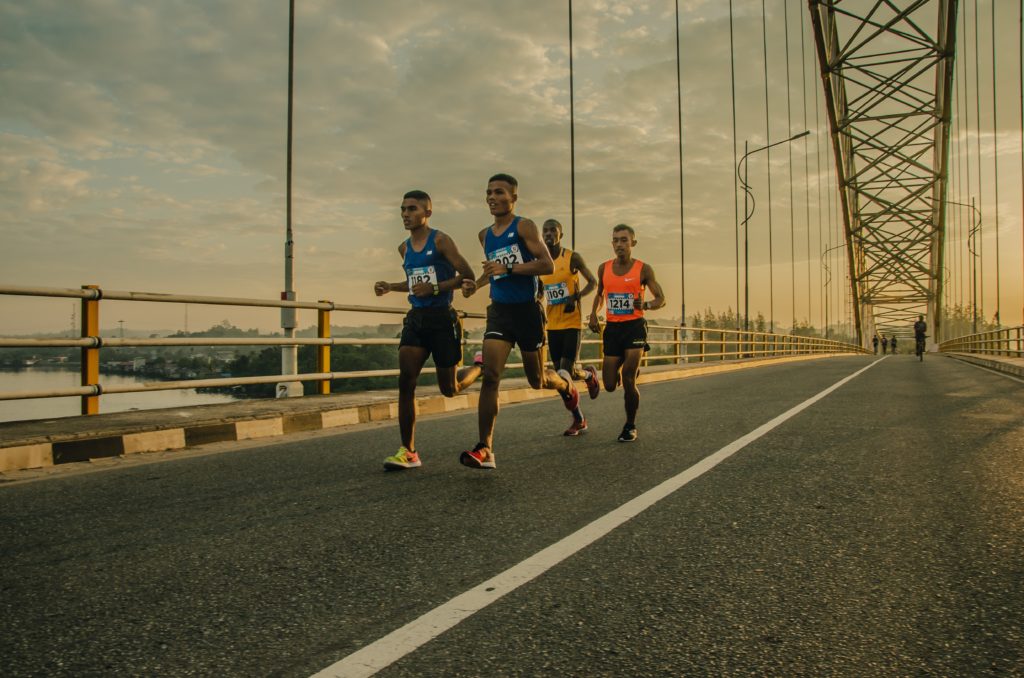PREVENTION OF RUNNING INJURIES
It is two months away from the 25th Steamtown Marathon. This column is dedicated to those dedicated runners preparing for the big day, Sunday, October 9, 2022.
Congratulations and thank you to Bill King, founder and race director, and his band of brothers, for their tireless efforts organizing and sustaining a great race that instills pride for all people of NEPA. It has inspired many people, including me, to transfer the discipline and determination required to complete a marathon by overcoming challenges one mile at a time.
Now, a little marathon history: In 490 B.C. Phedippides, ran 25 miles from Marathon to Athens to deliver an important military message and died immediately. Ironically, the first marathon of the modern Olympic Games in 1896 in Athens was won by Spiridon Louis, a humble Greek peasant, who stopped along the way for a glass of wine and told the owner of the tavern that he would win the race. He was determined to pace himself properly, as he knew the dusty, hilly path better than anyone in the field. He was greeted with jubilation and become a hero and legend.
HOW TO PREVENT RUNNING INJURIES
Avoid the “terrible too’s”
- Avoid overtraining: number one cause of injury
- Follow the 10% rule
- Do not increase weekly mileage by > 10% each week
Only run miles needed to meet your goals
- Following the mantra that more must be better will lead to injury
- Accumulating “junk miles” causes the body to break down
Avoid inconsistent training
- Occurs when you have missed several sessions and you attempt to “catch up” by adding additional miles
Avoid repeating hard workouts without any easy workouts in between
- Do not run two hard workouts on consecutive days
- Allow for recovery, re-building and reduction of injury risk
Consider cross training to avoid overtraining without compromising fitness level
- Reduces chance of injury
- Balances muscle groups
- Strengthens non-running muscles and rests the running muscles(Quadriceps and adductors)
- Develops body parts that running neglects
- Reduces stress on joints
- Low-impact
- Swimming
- Water running
- Cycling
- Cross country skiing
- Stair climbers
- Maintain/improve cardiovascular fitness
- Increases aerobic capacity
- Burns additional calories
- Avoids boredom of running
- Provides mental break from sport to avoid burn-out
- Especially for the long distance events (marathons)
- Allows continued training despite injury
- Maintain fitness level while recovering from injury
- Reduces frustration of inability to run
Treat your feet right
- Avoid worn out shoes
- Most common cause of injury
- Reduced shock absorption, cushioning and stability
- Increases stress and impact
- Muscle fatigue, shin splints and joint pain (especially knees) may be a signal
- Replace every 300-400 miles
- Dependent on running style, body weight and running surface
- Smaller/lighter runners closer to 400
- Heavier runners closer to 300
- Running on hard surfaces
- Replace shoes sooner than if running on treadmill
- Purchase a second pair halfway through the life of the initial pair
- Rotate shoes
- Running in different shoes on alternating days provides even stress distribution on feet
- Having a fresh pair as a reference
- Will recognize when old ones need to be replaced
- Shoe type
- Most important piece of equipment
- Appropriate for foot type and weight
- Flat foot: motion control
- Tennis shoes not appropriate
Visit your doctor regularly and listen to your body.
NEXT MONDAY – Read Dr. Paul J. Mackarey “Health & Exercise Forum!”
This article is not intended as a substitute for medical treatment. If you have questions related to your medical condition, please contact your family physician. For further inquires related to this topic email: drpmackarey@msn.com
For all of Dr. Mackarey's articles visit: www.mackareyphysicaltherapy.com/forum
Paul J. Mackarey PT, DHSc, OCS is a Doctor in Health Sciences specializing in orthopaedic and sports physical therapy. Dr. Mackarey is in private practice and is an associate professor of clinical medicine at GCSOM.

